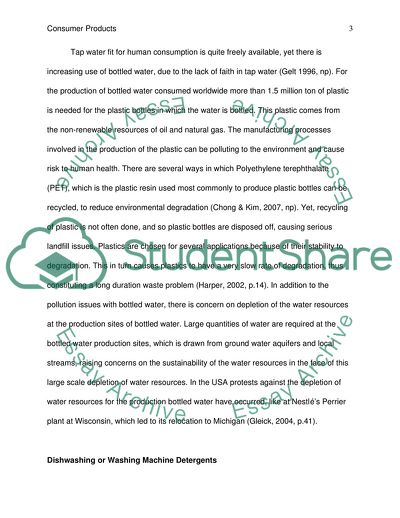Cite this document
(Consumer Products: Bottled Water and Polyethylene Food Storage Bags, Coursework Example | Topics and Well Written Essays - 1250 words, n.d.)
Consumer Products: Bottled Water and Polyethylene Food Storage Bags, Coursework Example | Topics and Well Written Essays - 1250 words. https://studentshare.org/environmental-studies/1774037-consumer-products
Consumer Products: Bottled Water and Polyethylene Food Storage Bags, Coursework Example | Topics and Well Written Essays - 1250 words. https://studentshare.org/environmental-studies/1774037-consumer-products
(Consumer Products: Bottled Water and Polyethylene Food Storage Bags, Coursework Example | Topics and Well Written Essays - 1250 Words)
Consumer Products: Bottled Water and Polyethylene Food Storage Bags, Coursework Example | Topics and Well Written Essays - 1250 Words. https://studentshare.org/environmental-studies/1774037-consumer-products.
Consumer Products: Bottled Water and Polyethylene Food Storage Bags, Coursework Example | Topics and Well Written Essays - 1250 Words. https://studentshare.org/environmental-studies/1774037-consumer-products.
“Consumer Products: Bottled Water and Polyethylene Food Storage Bags, Coursework Example | Topics and Well Written Essays - 1250 Words”. https://studentshare.org/environmental-studies/1774037-consumer-products.


